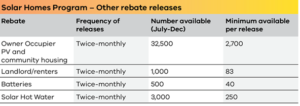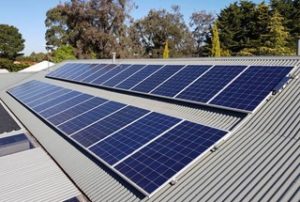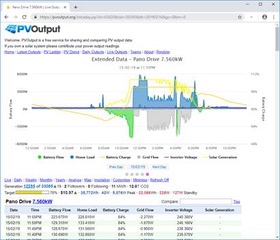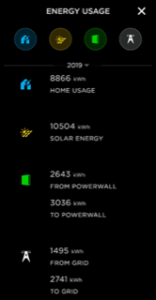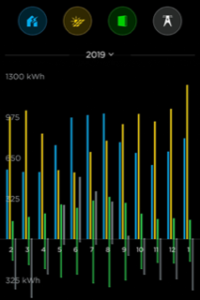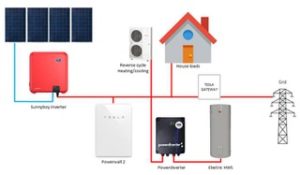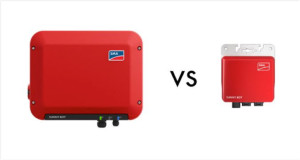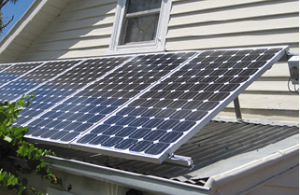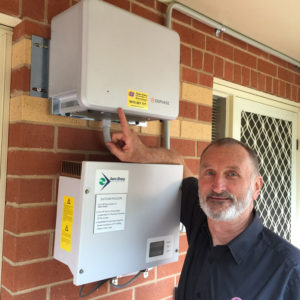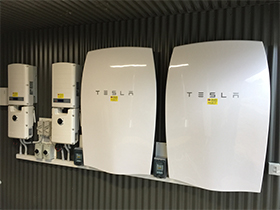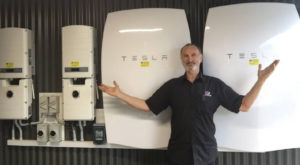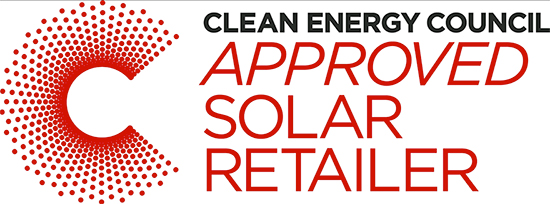In the first six months of the 2020-21 financial year the Solar Homes program will have 33,500 rebates available in total for owner-occupiers, community housing and renters. Rebates and new values from 1 July are set out in the new Notice to Market, with rebate values dropping slightly.
Similar to the previous rebate value decrease:
- Any existing quotes with an effective date prior to 1 July 2020 that do not have an active application will expire at the close of business on 30 June 2020. This includes any draft quotes.
- Customers who attempt to retrieve an expired quote from 1 July, will not be able to do so unless you requote to reflect the solar PV rebate reducing to $1,850 or the battery rebate reducing to $4,174 from 1 July 2020.
- Retailers will be able to upload new quotes for 2020-21 or requote to reflect the new rebate value from Saturday 27 June.
- If your customer intends to apply for a rebate after 1 July, make sure you set the effective date to 1 July or later.
Rebate releases
- Twice-monthly releases will be scheduled between July and December, pro-rated to ensure a steady supply of all rebates throughout the next six months.
- Rebates will be released on the first business day of each month and mid-month for all rebate?types.
- The first release for 2020-21 will happen at 12 noon on Wednesday 1 July.
The minimum released numbers are reflected in the table below, noting that additional rebates may be release as necessary to account for cancelled, expired or ineligible applications.
New Notice to Market requirements from 1 July 2020
In summary, the key additional requirements in the Notice to Market that are mandatory as of 1 July are:
- Solar PV modules – only solar PV modules from Solar Victoria’s Approved PV Module List can be used and they must be from a brand participating in the joint industry and Clean Energy Regulator Solar Panel Validation Initiative.
- WorkSafe prosecution restrictions – solar retailers must have no prosecutions registered with WorkSafe Victoria (or equivalent) in the past three years resulting in a plea of guilty or finding of guilt.
- Valid White Card – holding a valid White Card (CPCCWHS1001 – Prepare to work safely in the construction industry) is already a mandatory requirement for working on any solar installation. See our Training web page for details about how to complete this unit free of charge.
- E-waste –the Victorian Government’s ban on e-waste to landfill has been a requirement since 2019 and solar businesses should be ensuring compliance in disposing correctly of any e-waste produced.
Program requirements coming up in the new financial year
- Mandatory training – solar workers will need to complete the unit VU22744 Work safely in the solar industry by 31 December 2020. Complete this free unit of study as early as possible, to secure a fully-funded place – see our Training web page for details.
- Retailers portal update – a new audit section will be added to the Solar Homes Program retailer portal to allow retailers to track rectifications that are identified in audits.
- Mandatory requirements for payment – as of 1 August 2020, retailers will need to ensure they are supplying correct documentation in order to receive payment.

 Solar Calculator
Solar Calculator